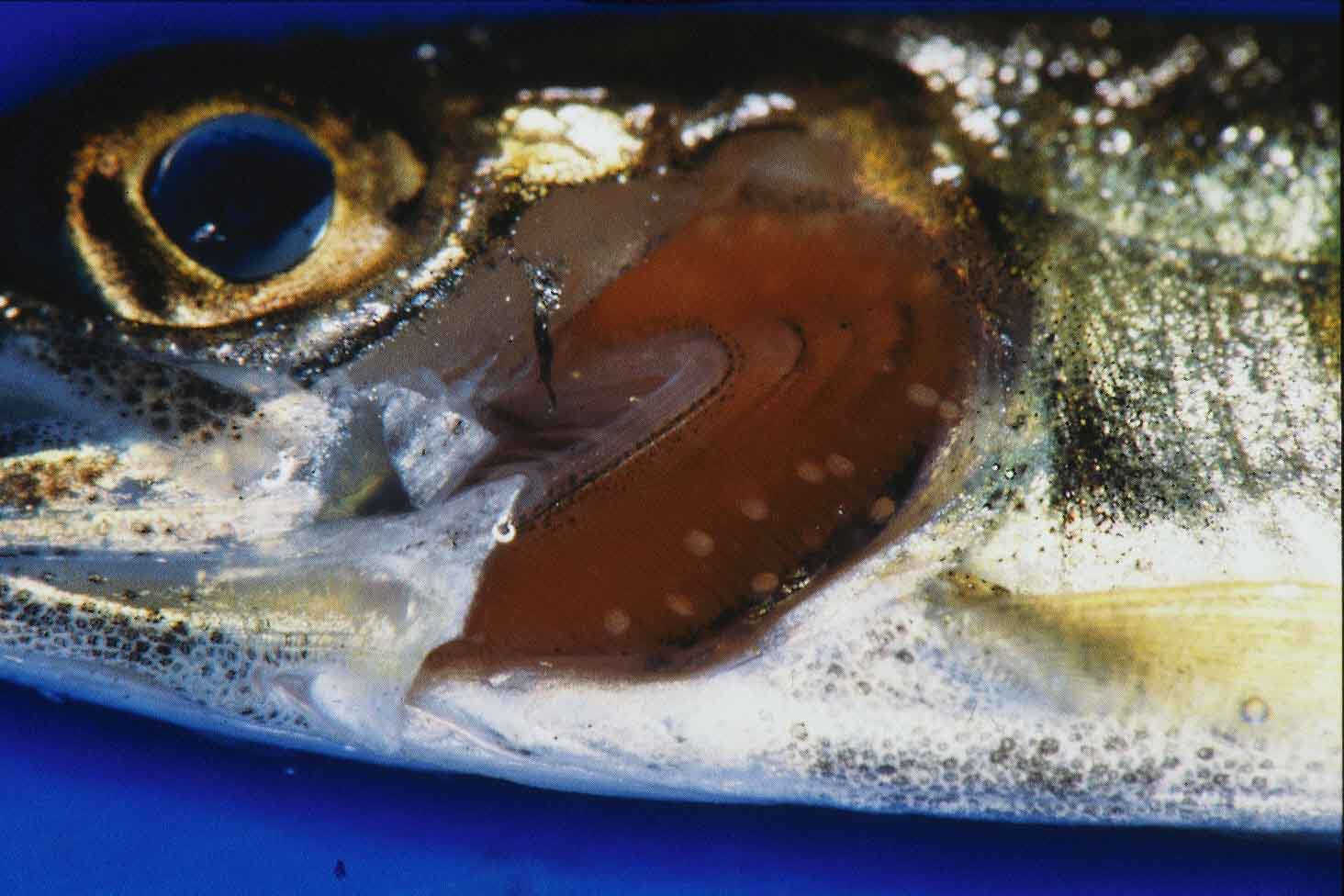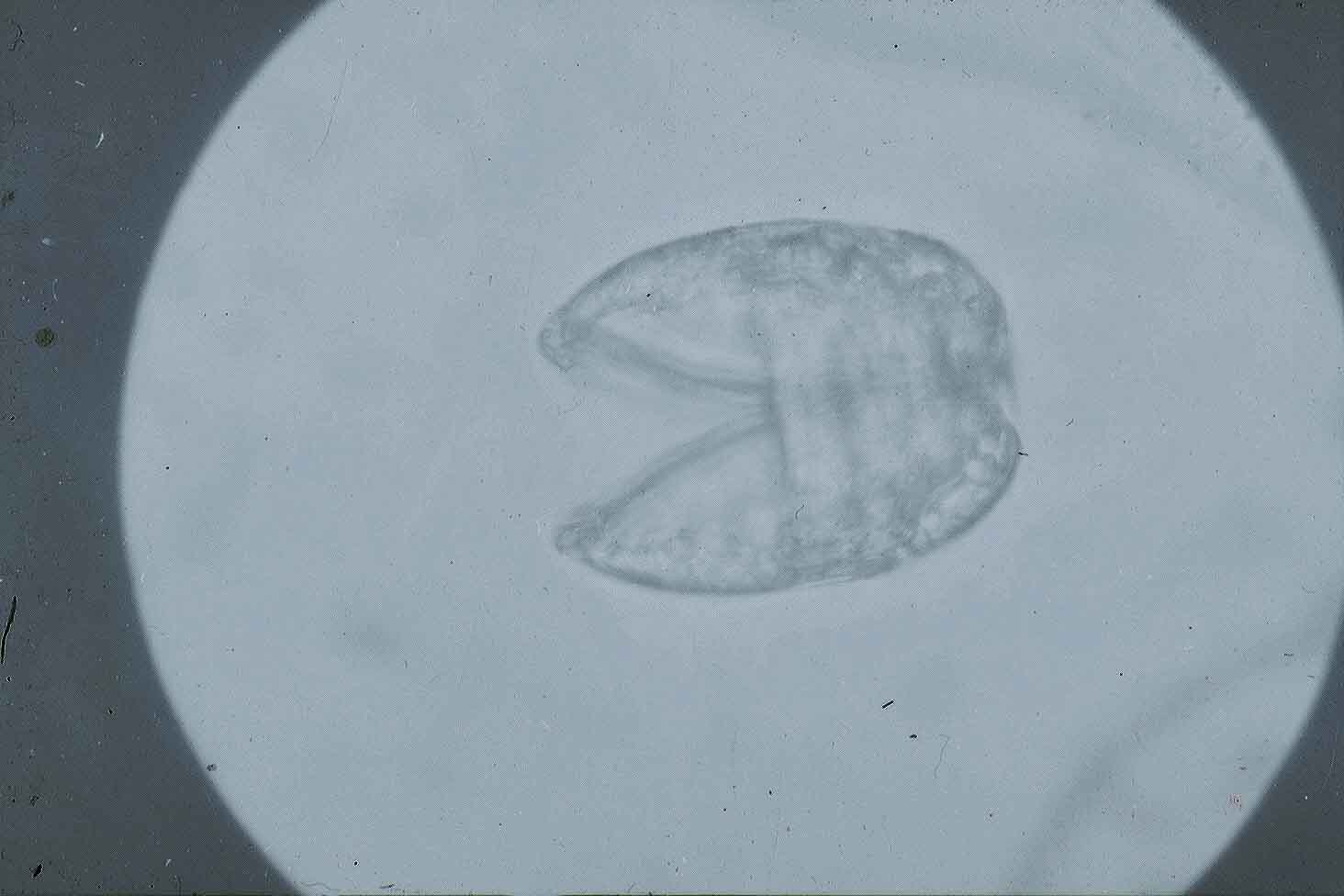

(Photos by S. Urawa (1, 2) and T. Awakura (3))
Fig. 3. Glochidium larvae of M. laevis


Fig. 1. Numerous glochidia parasitized the gill..
Fig. 2. Heavily infected gill with M. laevis.
| Parasite | Margaritifera laevis (Glochidium of freshwater pearl mussel) |
|---|---|
| Taxonomy | Mollusca, Bivalvia, Unionoida |
| Hosts | Salmonids |
| Disease name | Glochidiosis |
| Infection site | Gill |
| Clinical signs | Infected fish usually exhibits no external abnormality. A number of parasites (0.07-0.46 mm) are observed in the gill (Figs. 1 and 2). |
| Parasitology | The adult shell of Margaritifera laevis, a freshwater bivalve, is about 10 cm long, ellipsoid and thick. Its valves are nacred white internally, while bistered externally. The mussels habit in sand, gravel and small stones in fast-flowing rivers and streams. The glochidia (Fig. 3) are released in summer, and attach to the fish’s gill. They remain for several months, transferred to the upstream by the host’s migration, until they drop off and live partly buried in the sand. |
| Pathology | Generally, its pathogenicity is low. However, heavily infected fish (thousands of parasites per one fish) dies due to the impairment of gas exchange (Awakura, 2006). |
| Health hazard | Since this parasite is not infectious to human, it is harmless in food hygiene. |
| Diagnosis | The parasite can be morphologically identified by the stereomicroscopic observation. |
| Other information | It is recommended not to use the river water in order to prevent the invasion of the parasite. For example, rear the fish by filtered water. Margaritifera laevis has been listed in the Japanese Red List by Ministry of the Environment. |
| References | Awakura, T. (2006):
Glochidium infection. New atlas of fish diseases (Hatai K. and K. Ogawa), Midori Shobo, p. 48. (In Japanese) |